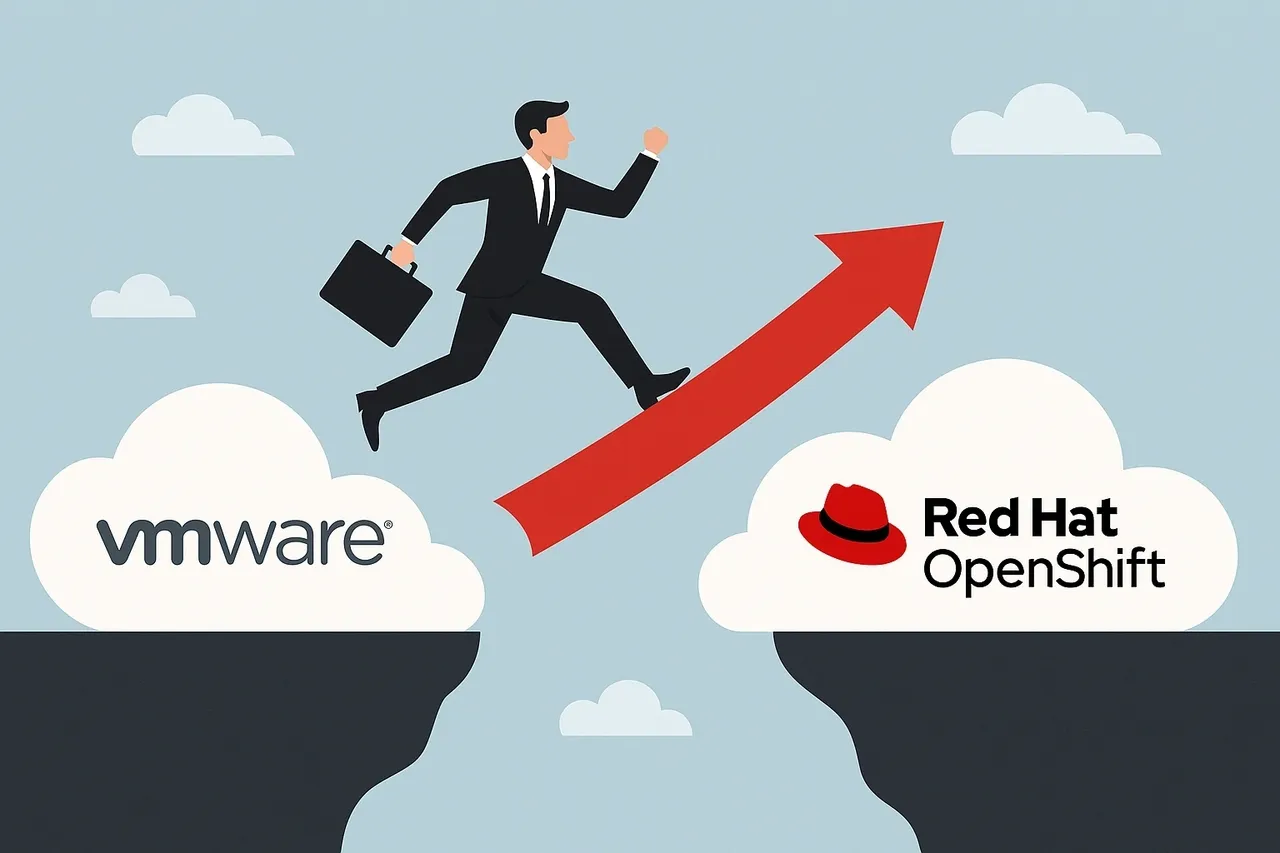Enterprise IT is experiencing a major shift—one that’s forcing leaders to make serious decisions about their infrastructure strategy. With Broadcom’s acquisition of VMware, long-standing confidence in the virtualization giant is beginning to crack. Customers that once viewed VMware as stable and strategic are now facing real concerns over the platform’s future. Whether it’s the slowing pace of innovation, increasingly unpredictable support, or aggressive licensing models that strain already-tight budgets, the message is clear: the status quo is no longer sustainable.
Enterprises have to now choose between staying anchored to a platform in flux or seizing the opportunity to modernize. Red Hat OpenShift is rapidly emerging as the alternative of choice. Built for cloud-native agility, OpenShift is not just a Kubernetes platform; it’s a modern application platform that supports both containers and virtual machines, offering enterprises a clear path to transition at their own pace without sacrificing continuity.
Concerns about VMware’s future are not hypothetical. Innovation under Broadcom appears increasingly driven by financial performance rather than technological advancement. IT leaders worry that the product roadmap will stagnate and that new features—critical to keeping infrastructure current and competitive—may slow to a trickle. Support, once VMware’s stronghold, is also becoming a pain point. Many report longer response times, eroding SLAs, and a lack of proactive engagement. But the most jarring shift is in pricing. Enterprises are reporting two- to three-fold increases in license fees, often with limited visibility or flexibility. For organizations trying to control costs while scaling infrastructure, this volatility is unacceptable.
The implications stretch across the entire organization. VMware administrators are being asked to upskill rapidly, with many now needing to learn new platforms under time pressure. IT directors are caught in the crossfire of rising infrastructure costs and increasing demands from the business for innovation and agility. Meanwhile, CFOs are growing impatient with licensing models that offer neither transparency nor long-term value. Amid this, Red Hat OpenShift presents an opportunity to break away from outdated systems and unlock a new level of operational efficiency and strategic control.
Migrating to OpenShift isn’t just a technical decision—it’s a strategic one. It allows organizations to shed technical debt and adopt a modern architecture that supports continuous delivery, automation, and hybrid cloud deployment. OpenShift enables teams to run legacy applications alongside cloud-native services on a unified platform, providing flexibility without forcing risky all-at-once transitions. Unlike proprietary solutions, it is based on open standards, giving enterprises the freedom to choose how they deploy and manage applications—on-premises, across multiple clouds, or at the edge.
This shift doesn’t need to be disruptive. In fact, the most successful migrations begin small. Many organizations start with a clear goal—reducing cost, gaining agility, or accelerating development cycles—then pilot OpenShift on a limited workload to demonstrate feasibility and value. From there, they expand adoption based on business needs, moving at a sustainable pace. By carefully auditing workloads and choosing low-risk, high-impact services for the initial phase, IT teams can build momentum while minimizing disruption.
Migration is only part of the equation. Empowering internal teams through retooling and reskilling is essential to long-term success. The move to OpenShift brings new opportunities for automation, observability, and operational efficiency—but to unlock these, staff must be trained and enabled. Organizations that invest in structured upskilling are not only able to execute the migration more smoothly but also position their teams to thrive in a fast-moving, cloud-native world.
Astronix plays a key role in making this journey seamless. As a cloud-native consulting partner with deep OpenShift and Kubernetes expertise, we specialize in helping enterprises assess their current environments, develop migration roadmaps, and implement secure, scalable platforms for the future. Our services extend beyond technical execution—we support change management, training, and long-term optimization so that the transition isn’t just successful, but transformative.
Our specialized VMware migration solution helps organizations transition from VMware environments to OpenShift Virtualization with minimal disruption. This solution provides a structured approach to migrate workloads while enhancing capabilities.
We deliver comprehensive migration solutions including:
VMware environment assessment
TCO analysis and business case development
OpenShift Virtualization implementation
Migration tooling and automation
Workload transition execution
Operational transformation
If you’re ready to take the first step toward modernization, Astronix is here to help. We invite you to start with a discovery session or pilot program and see firsthand how OpenShift can redefine your infrastructure future. Let’s build something smarter—together.






